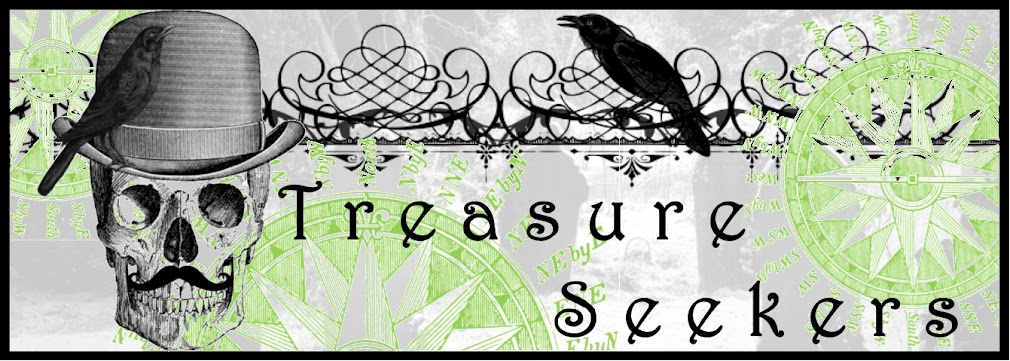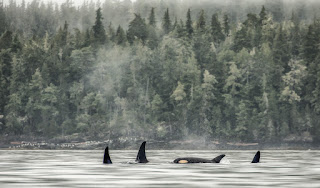Tuesday, September 15, 2015
And Then There Were Whales - Day 6 on the Johnstone Straight
In my recounting of our Sea Kayaking trip I am brushing over Day 5 as it was essentially a repeat of Day 4 except we switched camp sites to camp on a Rubbing Beach. When Orcas approach a beach to rub they come into the shoreline, in as little as 6 feet of water. Then they move their bodies against the pebbles on the beach. Often rolling upside down, rubbing themselves along it, from the tip of their heads to the tips of their flukes. At other times just on their undersides. Orca beach rubbing is an activity that has been seen and well documented on the British Columbia coast for over 40 years. Unfortunately, we spent two nights in the rain on the rubbing beach and apparently none of the resident or transient Orcas had an itch that needed to be scratched.
It was with a heavy heart that we proceeded to pack up our belongings on day 6 to make the return paddle to Telegraph Cove. Having not seen any whales in five days I was honestly disappointed that our trip was coming to an end and our opportunities for whale sightings had vanished. It was raining and extremely foggy on our last day as we entered the water.
We started our paddle along Vancouver Island and after a short distance we noticed a smallish sightseeing boat with approximately 6 people aboard racing our direction. I was concerned at first that they could not see us because of the fog but then it became apparent that they were intentionally headed towards us to speak with our guide Mel.
The captain of the small boat informed us that approximately one mile behind us there was a pod of 6 or 7 Resident Orca's headed our direction. We immediately stopped paddling and turned our kayaks around to face the direction we had just come from. And there we sat carefully listening to see if we could hear the explosive whoosh of air exiting the blowholes of the whales in the distance. Sometimes you can hear the air and see the mist of water in the air before you can visually locate their dorsal fins above the water. And in the fog you find yourself relying heavily on this sound to locate their position. Or in our case in addition to listening and looking we also watched the whale sightseeing boats in the distance to see where they were headed. And as luck would have it they started taking off to the left across the channel (the opposite side of where we were paddling).
As a group we started drifting and then paddling (directly across from where we were sitting on the water) on a course to intercept the whales and boats coming up the opposite side of the straight. This would seem slightly improbable as whales and boats are very fast and in the Kayaks we are not. An Orca can reach speeds in excess of 30 mph while we were averaging at best 2 to 3 mph. We quickly discovered that the boats and the whales were moving at a slower pace than expected which provided us with invaluable time to make it across the straight.
With the whales and boats in sight we were able to shift our angle and paddle in the same direction as they were headed keeping pace with the small pod of Orcas! What we determined was that the Orca's were traveling in a slow swimming pattern. When Orcas rest, they often line up side by side, in a formation known as a resting line. Like other cetaceans, they are conscious breathers and must stay awake to breathe. Though they rest, they never fall fully asleep like humans. The slower swimming speed and shallow short dives (2 to 3 minutes) enabled us to paddle along with the Orcas for over an hour. It was thrilling to have the opportunity (that we had been dreaming of all week) finally present itself on our last paddle of the trip. It was heart stopping to witness them moving so gracefully in the water up close and to feel that you were a small part of their natural environment without disturbing them. Seeing the Orca's was definitely the icing on the cake of a great and memorable adventure!
Subscribe to:
Post Comments (Atom)
















No comments:
Post a Comment